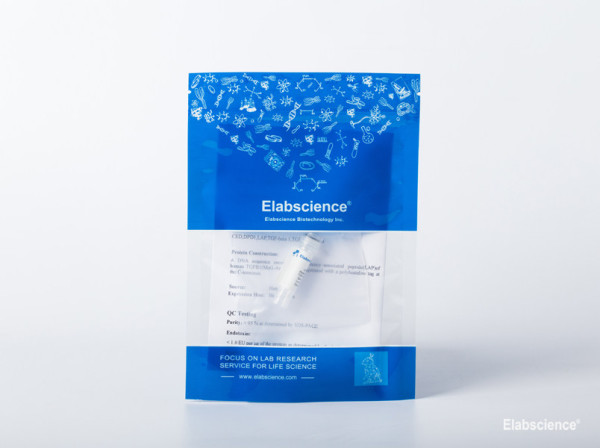Cookie preferences
This website uses cookies, which are necessary for the technical operation of the website and are always set. Other cookies, which increase the comfort when using this website, are used for direct advertising or to facilitate interaction with other websites and social networks, are only set with your consent.
Configuration
Technically required
These cookies are necessary for the basic functions of the shop.
"Allow all cookies" cookie
"Decline all cookies" cookie
CSRF token
Cookie preferences
Currency change
Customer-specific caching
FACT-Finder tracking
Individual prices
Selected shop
Session
Comfort functions
These cookies are used to make the shopping experience even more appealing, for example for the recognition of the visitor.
Note
Show the facebook fanpage in the right blod sidebar
Statistics & Tracking
Affiliate program
Conversion and usertracking via Google Tag Manager
Track device being used

| Item number | Size | Datasheet | Manual | SDS | Delivery time | Quantity | Price |
|---|---|---|---|---|---|---|---|
| E-PDMM100007.20 | 20 µg | - |
7 - 16 business days* |
224.00€
|
|||
| E-PDMM100007.100 | 100 µg | - |
7 - 16 business days* |
354.00€
|
If you have any questions, please use our Contact Form.
You can also order by e-mail: info@biomol.com
Larger quantity required? Request bulk
You can also order by e-mail: info@biomol.com
Larger quantity required? Request bulk
Activity: Testing in progress Protein Construction: A DNA sequence encoding theMouse ALPL protein... more
Product information "ALPL protein(His tag), recombinant mouse"
Activity: Testing in progress Protein Construction: A DNA sequence encoding theMouse ALPL protein (P09242) (Met1-Ser502) was expressed with a C-His. Sequence: Met1-Ser502. Fusion tag: C-His Endotoxin: Please contact us for more information. Apparent Molecular Mass: 70 kDa. Protein function: Alkaline phosphatase (ALPL) is a hydrolase enzyme responsible for removing phosphate groups from many types of molecules, including nucleotides, proteins, and alkaloids. The process of removing the phosphate group is called dephosphorylation. As the name suggests, alkaline phosphatases are most effective in an alkaline environment. It is sometimes used synonymously as basic phosphatase. Alkaline phosphatases (APs) are ubiquitous in many species, from bacteria to human. Four genes encode AP isoenzymes in humans and rodents. Three AP genes are expressed in a tissue-specific manner (i.e., placental, embryonic, and intestinal AP isoenzymes). Expression of the fourth AP gene is nonspecific to a single tissue and is especially abundant in bone, liver, and kidney. This isoenzyme is also called tissue-nonspecific alkaline phosphatase (TNAP). The enzyme tissue non-specific alkaline phosphatase (TNAP) belongs to the ectophosphatase family. TNAP is present in large amounts in bone in which it plays a role in mineralization. Protein function: Alkaline phosphatase that metabolizes various phosphate compounds and plays a key role in skeletal mineralization and adaptive thermogenesis (PubMed:10620060, PubMed:11028439, PubMed:14982838, PubMed:23942722, PubMed:33981039). Has broad substrate specificity and can hydrolyze a considerable variety of compounds: however, only a few substrates, such as diphosphate (inorganic pyrophosphate, PPi), pyridoxal 5'-phosphate (PLP) and N-phosphocreatine are natural substrates (PubMed:19874193, PubMed:23942722, PubMed:33981039). Plays an essential role in skeletal and dental mineralization via its ability to hydrolyze extracellular diphosphate, a potent mineralization inhibitor, to phosphate: it thereby promotes hydroxyapatite crystal formation and increases inorganic phosphate concentration (PubMed:9056646, PubMed:10620060, PubMed:11004006, PubMed:11028439, PubMed:12082181, PubMed:14982838, PubMed:32035618). Acts in a non- redundant manner with PHOSPHO1 in skeletal mineralization: while PHOSPHO1 mediates the initiation of hydroxyapatite crystallization in the matrix vesicles (MVs), ALPL/TNAP catalyzes the spread of hydroxyapatite crystallization in the extracellular matrix (PubMed:20684022, PubMed:26457330). Also promotes dephosphorylation of osteopontin (SSP1), an inhibitor of hydroxyapatite crystallization in its phosphorylated state, it is however unclear whether ALPL/TNAP mediates SSP1 dephosphorylation via a direct or indirect manner (PubMed:23427088). Catalyzes dephosphorylation of PLP to pyridoxal (PL), the transportable form of vitamin B6, in order to provide a sufficient amount of PLP in the brain, an essential cofactor for enzymes catalyzing the synthesis of diverse neurotransmitters (PubMed:7550313). Additionally, also able to mediate ATP degradation in a stepwise manner to adenosine, thereby regulating the availability of ligands for purinergic receptors (PubMed:19874193, PubMed:23942722, PubMed:23825434, PubMed:32028019). Also capable of dephosphorylating microbial products, such as lipopolysaccharides (LPS) as well as other phosphorylated small-molecules, such as poly-inosine:cytosine (poly I:C). Acts as a key regulator of adaptive thermogenesis as part of the futile creatine cycle: localizes to the mitochondria of thermogenic fat cells and acts by mediating hydrolysis of N- phosphocreatine to initiate a futile cycle of creatine dephosphorylation and phosphorylation (PubMed:33981039). During the futile creatine cycle, creatine and N-phosphocreatine are in a futile cycle, which dissipates the high energy charge of N-phosphocreatine as heat without performing any mechanical or chemical work (PubMed:33981039). [The UniProt Consortium]
| Keywords: | TNAP, Akp-2, TNSALP, AP-TNAP, Phosphoamidase, Alkaline phosphatase 2, Phosphocreatine phosphatase, Alkaline phosphatase liver/bone/kidney isozyme, Alkaline phosphatase, tissue-nonspecific isozyme, Recombinant Mouse ALPL protein(His tag) |
| Supplier: | Elabscience |
| Supplier-Nr: | E-PDMM100007 |
Properties
| Conjugate: | No |
| Host: | Human cells |
| Species reactivity: | mouse |
| MW: | 52 kD |
| Format: | Lyophilized |
Database Information
| KEGG ID : | K01077 | Matching products |
| UniProt ID : | P09242 | Matching products |
| Gene ID | GeneID 11647 | Matching products |
Handling & Safety
| Storage: | -80°C |
| Shipping: | 4°C (International: -20°C) |
Caution
Our products are for laboratory research use only: Not for administration to humans!
Our products are for laboratory research use only: Not for administration to humans!
Information about the product reference will follow.
more
You will get a certificate here
Viewed


